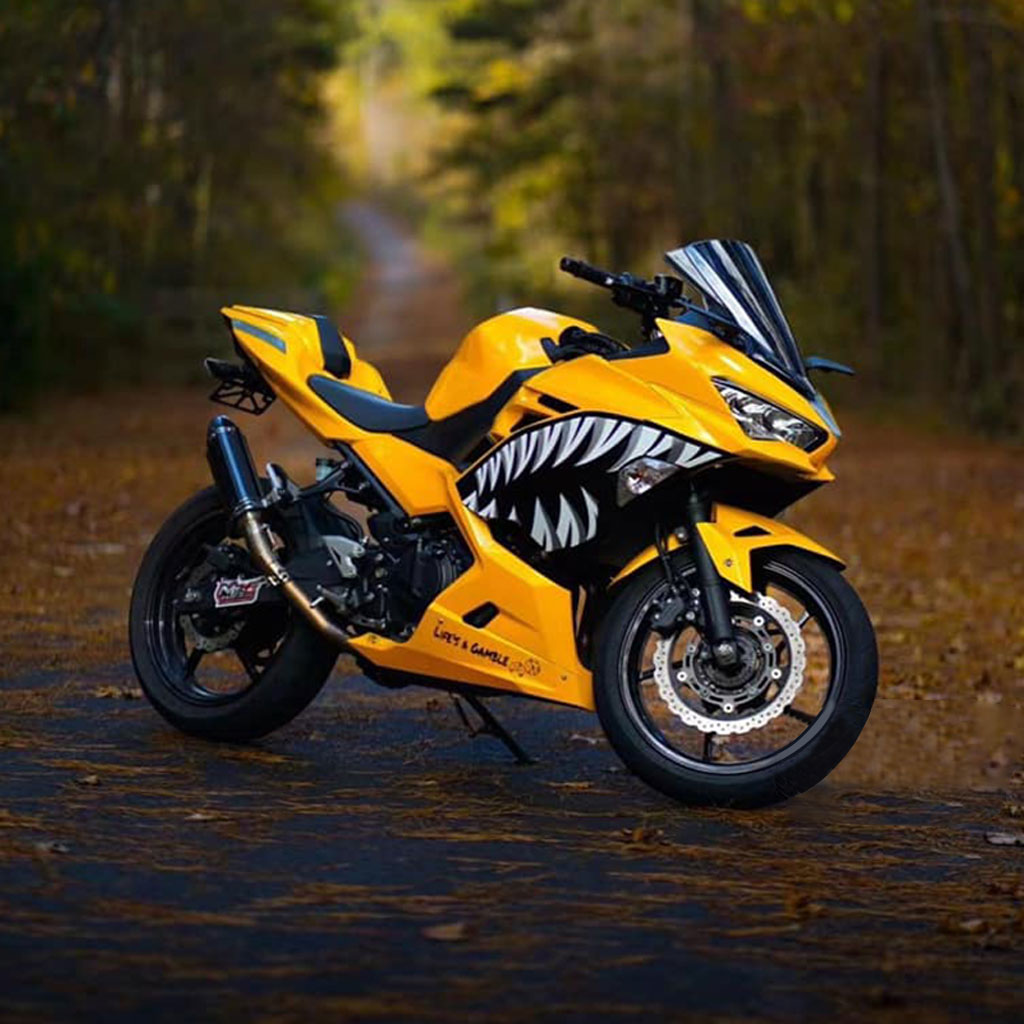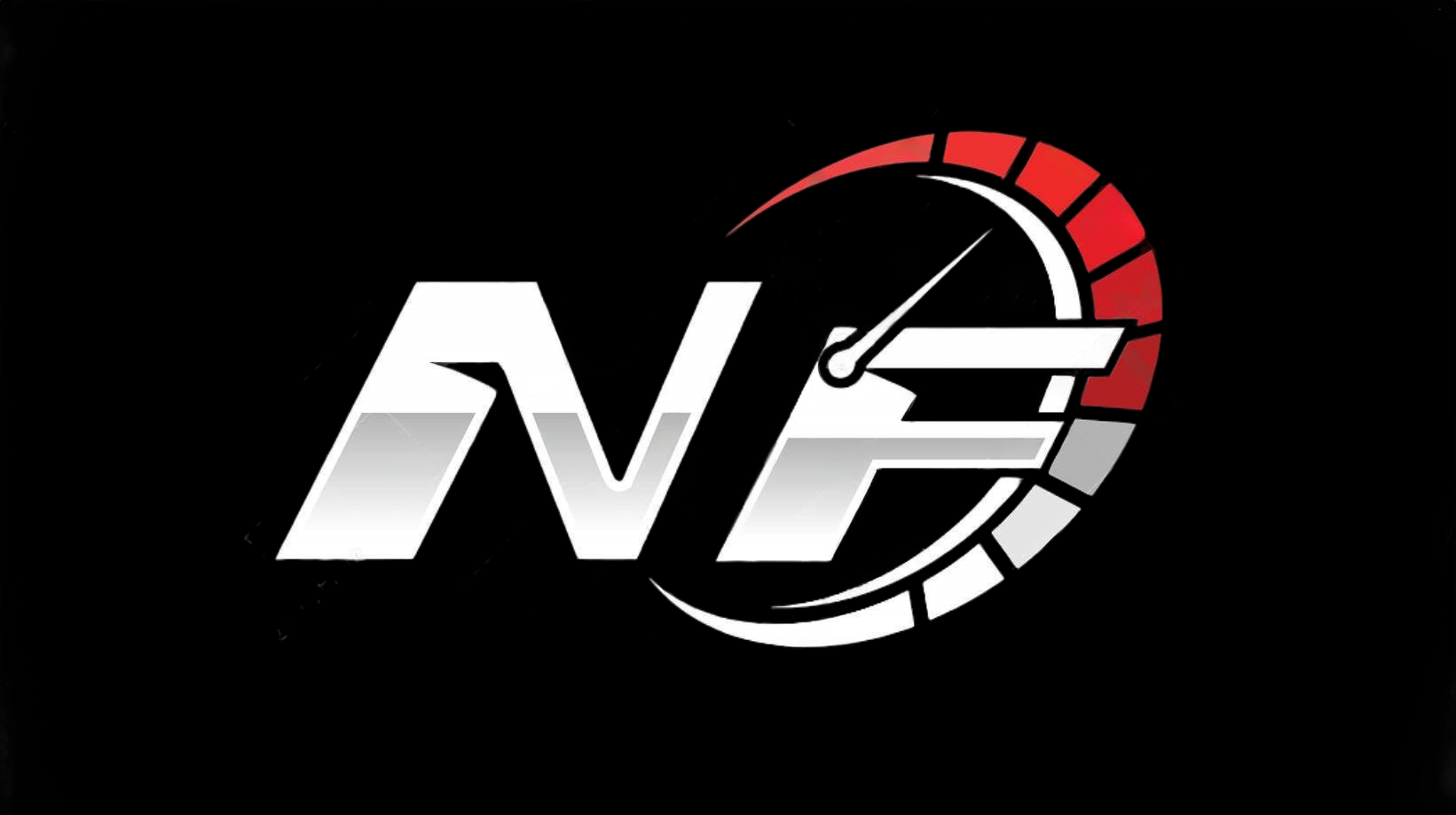Indian Bike Helmet Buying Guide for Safe and Stylish Rides
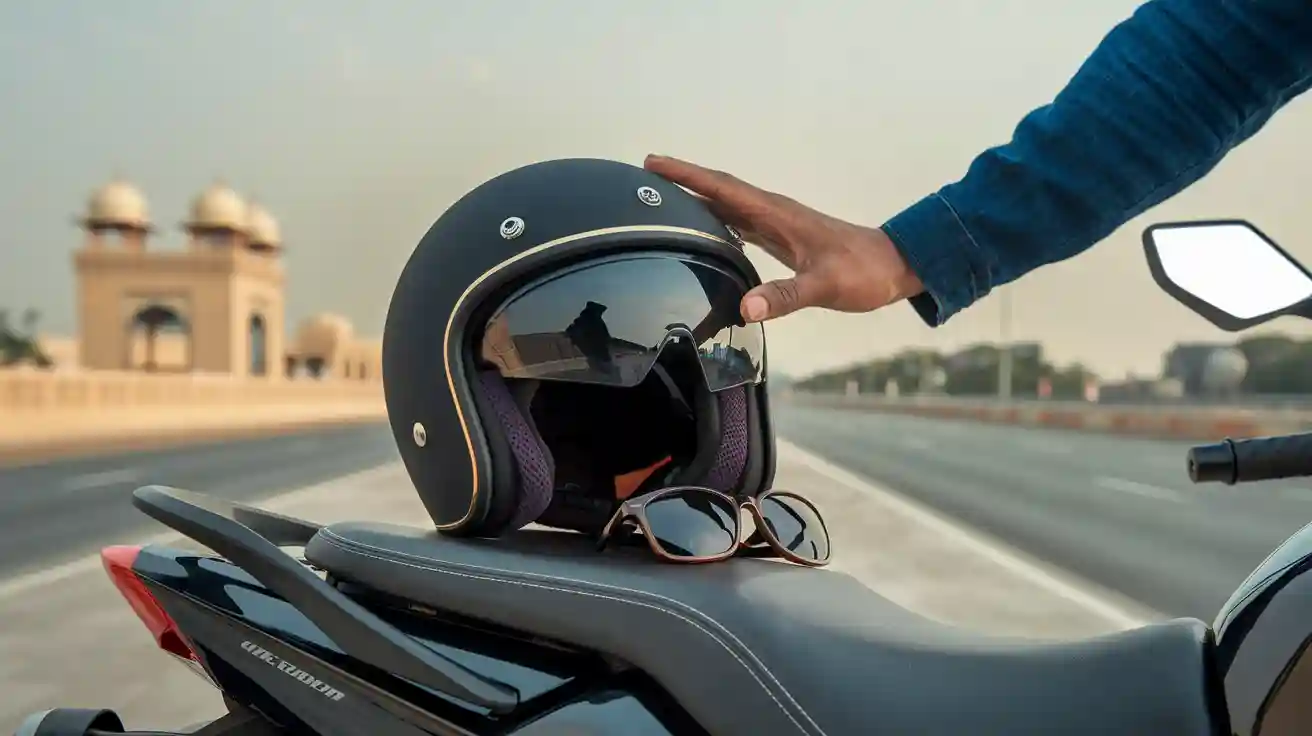
You need an indian bike helmet that keeps you safe every time you ride your motorcycle. Riders in India face busy roads and many risks. A good helmet protects your head during an accident. It must fit well and feel comfortable. The right helmet matches your motorcycle and shows your style. Many riders choose helmets that help them feel confident and safe. You can find a helmet that suits your needs as a rider.
Why Indian Bike Helmet Safety Matters
Accident Statistics and Helmet Use in India
You face many risks when you ride a motorcycle on Indian roads. Every year, thousands of accidents happen. Many of these accidents involve two-wheelers. If you do not wear a helmet, your chance of serious injury or death increases. The importance of helmets becomes clear when you look at the numbers. Studies show that helmets reduce the risk of head injuries by almost 70%. You can see the growing need for helmets as more people use bikes for daily travel.
Tip: Always wear your helmet, even for short trips. Most accidents happen close to home.
Many riders still ignore helmet safety. Some think helmets are uncomfortable or not stylish. You should remember that protection matters more than looks. Helmets save lives. You help set a good example for others when you wear your helmet every time you ride.
Legal Safety Requirements for Helmets
The law in India makes helmet use mandatory for all riders and pillion passengers. You must choose a helmet that meets safety standards. The government requires helmets to have ISI certification. This mark shows that your helmet passed strict safety tests. If you ride without a helmet, you can face fines or other penalties.
Here is what you need to know about helmet laws in India:
- You must wear a helmet that covers your head fully.
- Your helmet should have a clear visor for better vision.
- Only helmets with proper certification offer real protection.
The importance of helmets goes beyond following the law. You protect yourself and others on the road. When you follow helmet safety rules, you help reduce accidents and injuries for all riders.
Understanding Indian Bike Helmet Safety Standards
When you choose an indian bike helmet, you need to check its safety standards. These standards help you know if a helmet can give you real protection. You see many helmets in the market, but not all of them keep you safe. You must look for proper certification and safety ratings before you buy.
ISI Certification for Helmets
The ISI mark stands for the Indian Standards Institute. You find this mark on helmets that pass strict safety tests in India. The Bureau of Indian Standards (BIS) gives this certification. You should always check for the ISI mark when you buy a helmet. This mark means the helmet meets the minimum safety requirements set by the Indian government.
Note: Only helmets with ISI certification are legal for use on Indian roads. If you use a helmet without this mark, you risk fines and less protection in an accident.
Here is what ISI certification checks for:
- Strong outer shell for impact protection
- Good quality straps and retention system
- Proper padding for comfort and safety
- Clear visor for better vision
You can see the ISI mark on the back or inside of the helmet. Always check for this before you buy. This simple step gives you peace of mind about your safety.
DOT and ECE Certifications in India
You may see helmets with DOT or ECE certification in Indian stores. DOT stands for the Department of Transportation in the United States. ECE stands for Economic Commission for Europe. Both these certifications show that the helmet meets international safety standards.
Many riders in India choose helmets with DOT or ECE certification for extra protection. These helmets go through tough tests for impact, retention, and visor quality. You get better safety features and sometimes more comfort.
| Certification | Region | Key Features |
|---|---|---|
| DOT | USA | Impact tests, retention, penetration |
| ECE | Europe | Rigorous lab tests, visor safety |
If you want the best protection, you can look for helmets with both ISI and DOT or ECE marks. Some brands offer dual-certified helmets in India. This gives you confidence in your helmet’s safety ratings.
Other Recognized Helmet Standards
You may also find helmets with other certifications like SNELL or SHARP. SNELL is a private safety group in the USA. SHARP is a helmet safety rating system from the UK. These standards use even more tests to check helmet safety.
- SNELL certification means the helmet passed very strict impact and retention tests.
- SHARP gives helmets a star rating based on real-world crash tests.
Tip: If you ride at high speeds or on highways, you should consider helmets with extra certifications for better protection.
You should always check the label or ask the seller about the helmet’s certification. Never buy a helmet without any safety certification. This choice can put your life at risk.
When you understand these safety standards, you make a smart choice. You protect yourself and follow the law. You also set a good example for other riders. Always pick a helmet with trusted certification for the best protection on every ride.
Helmet Types for Every Indian Rider
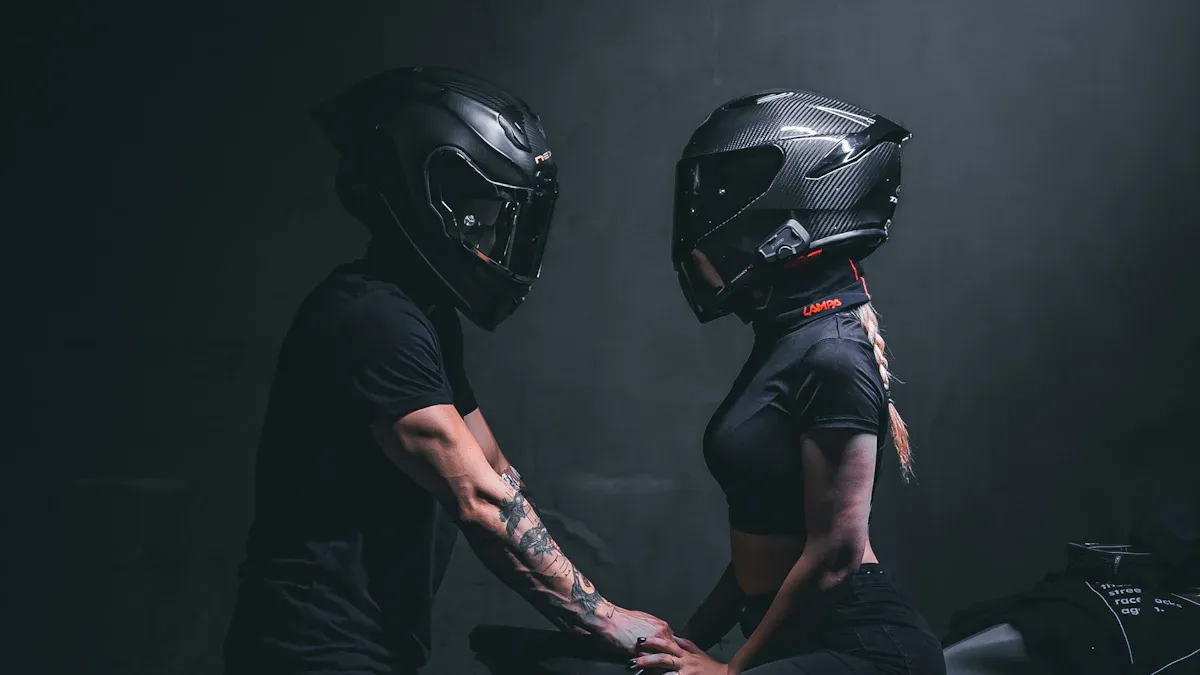
Choosing the right helmet can make your ride safer and more comfortable. You see many helmet types in the market. Each type offers different features for different riders. Let’s look at the most popular helmet types in India.
Full-Face Helmets
Full-face helmets give you the best protection. They cover your entire head, including your chin and jaw. You get a strong outer shell and a clear visor. This helmet keeps dust, wind, and rain away from your face. Many riders pick full-face helmets for city rides and long trips. You feel safe because this helmet protects you in most accidents.
Note: Full-face helmets work well for all weather conditions. You stay comfortable and protected on every ride.
Open-Face Helmets
Open-face helmets cover your head but leave your face open. You get good airflow and a wide view of the road. These helmets feel light and easy to wear. Many city riders like open-face helmets for short trips. You can talk to others without removing your helmet. Some open-face helmets come with a visor to shield your eyes from dust and sunlight.
- Open-face helmets do not protect your chin.
- You should use them for slow-speed rides or in less crowded areas.
Modular Helmets
Modular helmets combine features of full-face and open-face helmets. You can flip up the front part of the helmet. This design lets you talk or drink water without taking off your helmet. Riders who travel long distances often choose modular helmets. You get flexibility and good protection at the same time.
| Helmet Type | Protection Level | Comfort | Best For |
|---|---|---|---|
| Full-Face | High | Good | All riders |
| Open-Face | Medium | High | City riders |
| Modular | High/Medium | Good | Touring riders |
You should always pick a helmet that matches your riding style. The right helmet keeps you safe and makes your ride enjoyable.
Half Helmets
You see half helmets often on city roads. This helmet covers only the top of your head. Many riders choose half helmets for their light weight and simple design. You feel more air on your face and hear traffic sounds better. Some people like the freedom that half helmets give. You can put them on and take them off quickly.
Note: Half helmets do not protect your chin or face. You get less coverage than other helmet types.
You find half helmets in many colors and styles. Some have small visors to block sunlight. Others come with extra padding for comfort. You should check for a strong strap and a good fit. Always look for a helmet with proper certification. This helps you stay safe on busy roads.
Half helmets work best for short rides in low-traffic areas. You should not use them for long trips or high speeds. You get less protection in an accident. Many experts suggest full-face or modular helmets for better safety.
Off-Road Helmets
Off-road helmets help you ride on dirt tracks and rough paths. These helmets have a special shape. You see a pointed chin guard and a long visor. This design keeps mud and dust away from your face. You also get more airflow inside the helmet.
You need off-road helmets if you ride bikes on trails or in races. These helmets use strong shells and thick padding. You stay safe from flying rocks and branches. Many off-road helmets do not have a built-in visor. You wear goggles for eye protection.
| Feature | Off-Road Helmets | Other Helmets |
|---|---|---|
| Chin Protection | Yes | Varies |
| Long Visor | Yes | No |
| Airflow | High | Medium |
You should always pick a helmet that matches your riding style. Off-road helmets give you the best safety for adventure rides. You must check for certification before you buy. This helps you trust your helmet every time you ride.
Key Safety Features in the Best Helmet
When you choose a helmet, you need to look for advanced safety features that give you the best protection. The right helmet uses strong materials, smart design, and secure straps to keep you safe on every ride. Let’s explore the most important features you should check before you buy.
Shell Material and Construction
The shell is the outer layer of your helmet. It acts as the first line of defense during an accident. You need a shell that can absorb impact and protect your head from injury. Different shell materials offer different levels of safety and quality.
You often see helmets made from polycarbonate, thermoplastic, or composite materials. Polycarbonate shells are common, but they absorb less impact energy. Thermoplastic and hybrid composite shells absorb much more energy and show clear deformation when hit. This means they can reduce the risk of fatal or critical injury by up to 60%. Epoxy-based composites can fail with big cracks, so you should avoid them for daily use.
Here’s a quick comparison of common shell materials:
| Shell Material | Impact Energy Absorption | Failure Behavior | Fatality Rate on Impact | Injury Reduction Compared to PC/EPS |
|---|---|---|---|---|
| Fully Thermoplastic | Up to 65% | Ductile behavior with clear deformation | Around 2.4% (approx. 60% reduction) | ~60% reduction in critical/fatal injury |
| Hybrid Composite | Up to 65% | Ductile behavior with clear deformation | Around 3.6% (approx. 40% reduction) | ~40% reduction in critical/fatal injury |
| Epoxy-based Composite | Not specified | Catastrophic failure with significant cracks | Not specified | Not specified |
| Polycarbonate (PC/EPS) | Maximum 13% | Less deformation, higher energy transfer to foam | 6% (highest fatality rate) | Baseline (reference) |
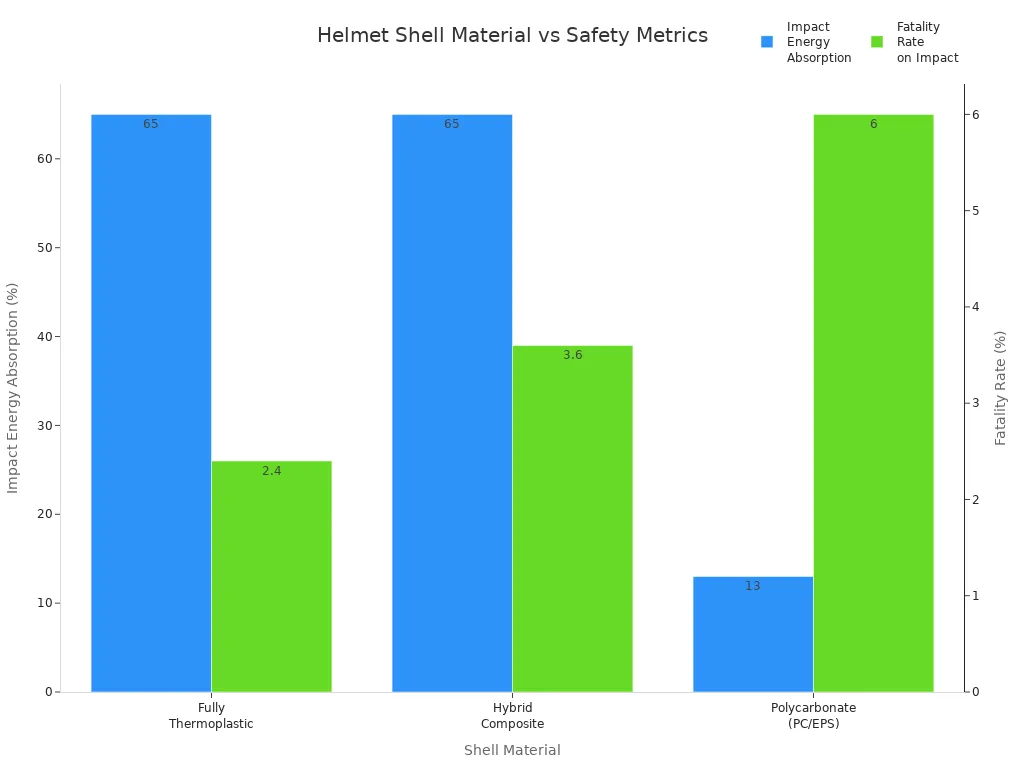
You should always check the label for the shell material. A high-quality shell gives you better safety and longer-lasting protection. Many riders choose composite shells for their balance of strength and weight.
Tip: Pick a helmet with a shell that shows clear deformation after a strong impact. This means the helmet absorbed the energy and kept you safer.
Impact Absorption Layers
Inside the helmet, you find layers that absorb shock. These layers are just as important as the outer shell. Most helmets use expanded polystyrene (EPS) foam. This foam crushes on impact and spreads the force over a larger area. You get less force on your head, which lowers the chance of injury.
Some helmets use multi-density foam. This type of foam handles both small and large impacts. You get better protection in different types of crashes. High-quality helmets often have extra layers or special materials that improve safety.
You should press gently on the inside of the helmet to feel the foam. It should feel firm but not too hard. If the foam feels loose or thin, the helmet may not give you enough protection. Always check for a thick, even layer inside.
Note: Never use a helmet with cracked or damaged foam. It cannot protect you in another accident.
Retention Systems and Straps
A helmet must stay on your head during a crash. The retention system and straps keep the helmet secure. You need a strong strap that fits under your chin. Most helmets use a D-ring or quick-release buckle. Both types work well if you adjust them correctly.
You should always fasten the strap before you ride. A loose helmet can come off in an accident. The strap should feel snug but not too tight. You should fit two fingers between the strap and your chin. High-quality helmets use strong, durable straps that last for years.
Some helmets have extra padding around the strap for comfort. You should check the stitching and buckle for any signs of wear. Replace the strap if you see fraying or damage.
Safety Alert: Never ride with an unfastened helmet. Even the best helmet cannot protect you if it comes off during a fall.
Ventilation and Airflow
You need a helmet that keeps your head cool and fresh. Good ventilation helps you ride longer without feeling tired. Airflow inside the helmet removes heat and sweat. This makes your ride more comfortable, especially in India’s hot weather.
Manufacturers design helmets with special vents. These vents let air enter and exit the helmet. You find intake vents at the front and exhaust vents at the back. When you ride, air flows through these channels and cools your head.
Here are some features you should look for:
- Multiple air vents on the top and sides
- Adjustable vents that you can open or close
- Wide channels inside the helmet for smooth airflow
Tip: Try the helmet on and check if you feel air moving when you ride. This helps you know if the ventilation works well.
A helmet with good ventilation also helps prevent fogging on the visor. You get improved visibility and style when your visor stays clear. You should always choose a helmet with high-quality airflow design. This gives you comfort and helps you focus on the road.
Visor Quality and Protection
The visor is one of the most important parts of your helmet. It covers your face and protects your eyes from dust, wind, and sunlight. You need a visor that gives you clear visibility in all conditions. High-quality visors use strong materials that do not scratch easily.
You should check for these features in a visor:
- Anti-scratch coating for longer life
- UV protection to shield your eyes from the sun
- Wide field of view for better visibility
- Easy-to-remove design for cleaning
A good visor improves your visibility during day and night rides. Some helmets come with double visors. You can use the inner sun visor during bright days and switch to the clear visor at night. This gives you flexibility and better quality for every ride.
| Visor Feature | Benefit |
|---|---|
| Anti-scratch | Keeps vision clear |
| UV protection | Shields eyes from sunlight |
| Wide field of view | Improves visibility |
| Easy removal | Simple cleaning and care |
Note: Always clean your visor with a soft cloth. Avoid using harsh chemicals that can damage the quality of the visor.
You should replace your visor if you see deep scratches or cracks. Damaged visors reduce visibility and lower your protection. Choose a helmet with a high-quality visor for the best riding experience.
Style and Personalization in Indian Bike Helmets
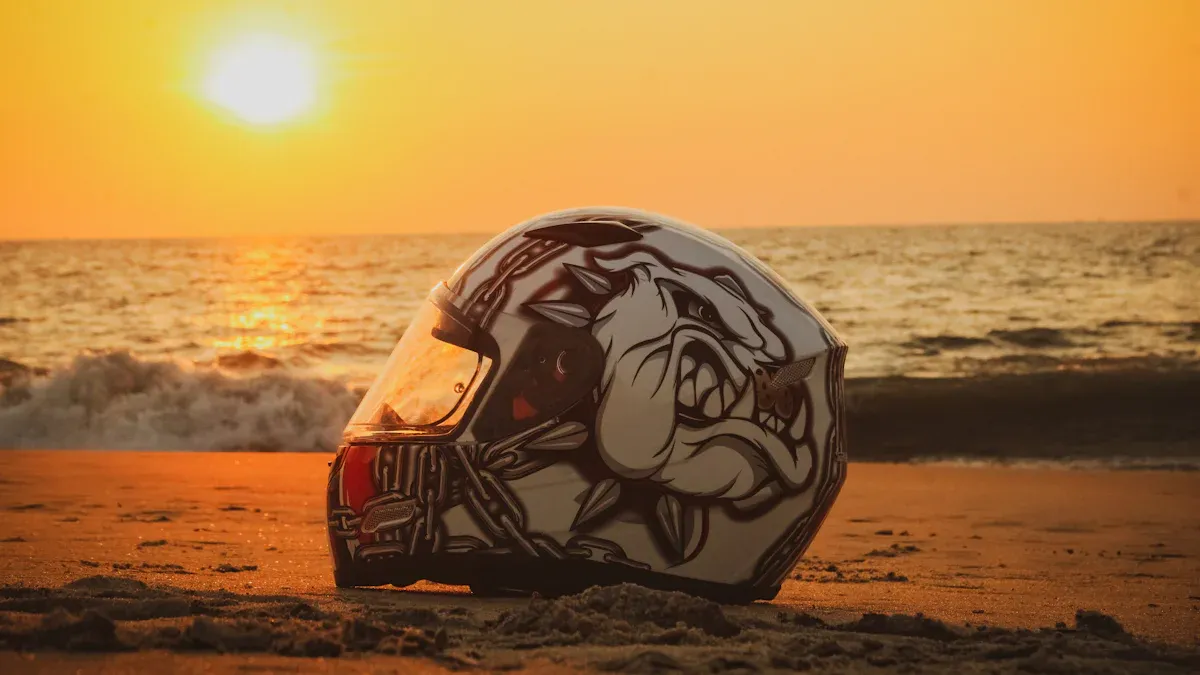
Colors, Graphics, and Finishes
You see many helmets on the market with bright colors and bold graphics. These designs help you stand out on busy roads. Some helmets use neon shades or reflective paint. These features make you more visible, especially at night. You can choose from matte, glossy, or metallic finishes. Each finish gives your helmet a unique look.
Manufacturers offer helmets with different patterns, stripes, and even cartoon characters. You find designs that match your favorite sports teams or hobbies. Some helmets use traditional Indian art or modern geometric shapes. You can pick a helmet that shows your personality.
Tip: Bright colors and reflective designs increase your safety by making you easier to spot.
Here is a quick list of popular helmet designs in India:
- Racing stripes
- Tribal patterns
- Cartoon graphics
- Metallic finishes
- Custom paint jobs
Matching Helmet Style with Bike and Personality
You can match your helmet style with your motorcycle for a complete look. Riders often choose helmets that fit the design of their bike. For example, a classic motorcycle looks good with a retro helmet. A sports bike matches well with a helmet that has sharp, modern designs.
Your helmet can also show your mood or interests. Some riders pick helmets with bold, colorful designs to express energy. Others prefer simple, clean designs for a calm and professional style. You can even find helmets with removable stickers or panels. This lets you change the design whenever you want.
| Motorcycle Type | Suggested Helmet Designs |
|---|---|
| Cruiser | Vintage, matte, classic |
| Sports Bike | Sharp lines, racing graphics |
| Scooter | Fun, colorful, playful |
| Adventure Bike | Rugged, bold, off-road |
You make a statement every time you ride. The right helmet design helps you feel confident and safe. Choose a helmet that fits your style and matches your motorcycle for the best riding experience.
Sizing and Fit Guide for Indian Bike Helmets
Measuring Head Size for the Best Fit
You need to measure your head before you buy a helmet. Use a soft measuring tape. Place the tape about one inch above your eyebrows. Wrap it around the widest part of your head. Write down the number in centimeters. Most helmet brands provide a size chart. Compare your measurement with the chart to find your size.
Tip: Measure your head two or three times to make sure you get the most accurate number.
Here is a simple table to help you match your head size with common helmet sizes:
| Head Circumference (cm) | Helmet Size |
|---|---|
| 53 - 54 | Small |
| 55 - 56 | Medium |
| 57 - 58 | Large |
| 59 - 60 | X-Large |
Trying On and Adjusting Your Helmet
You should always try on the helmet before you buy it. Place the helmet on your head and pull the straps down. The helmet should sit level and cover your forehead. Shake your head gently from side to side. The helmet should not move much. If it feels loose or tight, try a different size.
Check the chin strap. Fasten it and adjust until it feels snug. You should fit two fingers between the strap and your chin. The helmet should not press too hard on any spot.
Note: Spend a few minutes wearing the helmet in the store. This helps you notice any discomfort.
Ensuring Comfort and Secure Fit
Comfort is important for every ride. The ideal helmet feels snug but not painful. You should not feel pressure points. The padding inside should touch your cheeks and head evenly. If you wear glasses, make sure they fit well with the helmet.
A secure fit keeps you safe. The helmet should not slide off when you bend forward. Always check the fit each time you ride. Replace your helmet if it feels loose after some time.
Safety Alert: Never use a helmet that feels too tight or too loose. A good fit gives you the best protection.
Budget and Value: Finding the Best Helmet in India
Price Ranges and What to Expect
You can find a helmet in India at almost any price. The cost depends on the features, safety standards, and brand. Entry-level helmets start around ₹800 to ₹1,500. These helmets meet basic safety rules but may not offer the best comfort or style. Mid-range helmets cost between ₹2,000 and ₹5,000. In this range, you get better padding, stronger shells, and more color choices. Many riders choose these for daily use.
If you want high-quality helmets, you should look at the premium range. These helmets cost ₹6,000 or more. You get advanced safety features, better ventilation, and stylish designs. Some even have international certifications. You invest in your safety and comfort when you buy from this range.
Tip: Always check for certification before you buy. A low price does not mean good value if the helmet does not protect you.
Value-for-Money Helmet Brands and Models
You want the best value when you buy essential motorcycle gear. Many Indian brands offer strong helmets at fair prices. Here are some brands you can trust:
- Studds: Known for affordable and reliable helmets. Many models have ISI certification.
- Vega: Offers stylish designs and good comfort. You find many options for city rides.
- Steelbird: Popular for high-quality helmets with modern features.
- Axor: Sells helmets with international safety ratings. Good for riders who want extra protection.
- SMK: Makes helmets with advanced ventilation and strong shells.
You should compare features like shell material, visor quality, and fit. Some brands also offer matching gear, such as gloves or jackets, to complete your essential motorcycle gear set.
| Brand | Price Range (₹) | Key Features |
|---|---|---|
| Studds | 800 - 2,500 | ISI certified, basic comfort |
| Vega | 1,000 - 3,000 | Stylish, lightweight |
| Steelbird | 1,200 - 4,000 | High-quality helmets, modern |
| Axor | 3,000 - 8,000 | International standards |
| SMK | 4,000 - 10,000 | Premium, advanced features |
You make a smart choice when you balance price, safety, and comfort. The right helmet is always a key part of your gear and keeps you safe on every ride.
Maintenance and Lifespan of Your Indian Bike Helmet
Cleaning and Care Tips
You keep your helmet in top shape by cleaning it regularly. Use a soft cloth and mild soap to wipe the outer shell. Avoid harsh chemicals because they can damage the finish. For the visor, use a microfiber cloth to prevent scratches. Remove the inner padding if possible. Wash it with gentle detergent and let it air dry. Clean vents with a small brush to remove dust and dirt.
Tip: Clean your helmet every two weeks if you ride daily. This helps you avoid bad odors and keeps your helmet looking new.
Proper Storage Practices
Store your helmet in a cool, dry place. Keep it away from direct sunlight because heat can weaken the shell. Use a helmet bag or a soft cover to protect it from dust. Place your helmet on a flat surface or hang it on a dedicated hook. Avoid hanging it on your bike’s mirror or handlebar. This can deform the inner padding over time.
Here is a quick checklist for storing your helmet:
- Keep away from chemicals and fuel
- Avoid damp or humid areas
- Use a helmet bag for extra protection
When to Replace Your Helmet
You should replace your helmet every five years, even if it looks fine. Replace it sooner if you drop it hard or see cracks in the shell. If the straps or padding feel loose, get a new helmet. High-quality helmets last longer, but they still need replacement after a major impact. Always check for signs of wear before each ride.
Safety Alert: Never use a helmet that has been in a crash. It may not protect you again.
Quick Checklist for Buying the Best Helmet
You want to make sure you pick the right helmet before you ride. Use this checklist to help you choose the ideal helmet for your needs. This list covers safety, comfort, and style. Follow each step to stay safe and look great on every ride.
-
Check Certification
Look for ISI, DOT, or ECE marks. These show the helmet meets safety standards in India. -
Inspect the Shell Material
Choose a helmet with a strong shell. Thermoplastic or composite shells give better protection than basic plastic. -
Test the Fit
Measure your head. Try on the helmet. It should feel snug but not tight. The helmet should not move when you shake your head. -
Examine the Retention System
Fasten the chin strap. Make sure it feels secure. You should fit two fingers between the strap and your chin. -
Check the Visor
Look for a clear, scratch-resistant visor. Make sure it gives you a wide view and protects your eyes from dust and sunlight. -
Review Ventilation
Find helmets with good airflow. Vents keep your head cool, especially in hot weather. -
Match Your Style
Pick a design and color that fits your personality and matches your bike. Bright colors and reflective designs help others see you. -
Consider Your Gear
Make sure your helmet works well with your other gear, like jackets and gloves. A good match keeps you comfortable and safe. -
Set Your Budget
Decide how much you want to spend. Remember, safety comes first. Do not pick a helmet just because it is cheap. -
Inspect Before You Buy
Check for cracks, loose padding, or broken parts. Only buy a helmet in perfect condition.
Tip: Always wear your helmet and other gear every time you ride. Safety should be your top priority.
You should always put safety first when you ride. Pick an indian bike helmet that fits well, meets all safety rules, and matches your style. Never choose looks over protection. Make smart choices to keep yourself safe on every trip.
Remember: The right helmet helps you enjoy every ride with confidence.
FAQ
How do you know if a helmet fits you correctly?
A helmet fits you well if it feels snug all around your head. It should not move when you shake your head. You should fit two fingers between your chin and the strap. Try different sizes to find the best fit.
Can you use a helmet after a minor fall?
You should replace your helmet after any fall, even a minor one. The shell or foam may have hidden damage. Damaged helmets cannot protect you in another accident.
What is the difference between ISI, DOT, and ECE certifications?
| Certification | Country | Safety Level |
|---|---|---|
| ISI | India | Basic |
| DOT | USA | High |
| ECE | Europe | Very High |
You should always choose a helmet with at least one of these marks.
How often should you clean your helmet?
You should clean your helmet every two weeks if you ride daily. Use a soft cloth and mild soap for the shell. Wash the inner padding with gentle detergent. Let everything air dry before you use it again.
Can you wear headphones or Bluetooth devices inside your helmet?
You can use Bluetooth devices or headphones if your helmet allows it. Many modern helmets have space for speakers. Always keep the volume low so you can hear traffic and stay safe.
